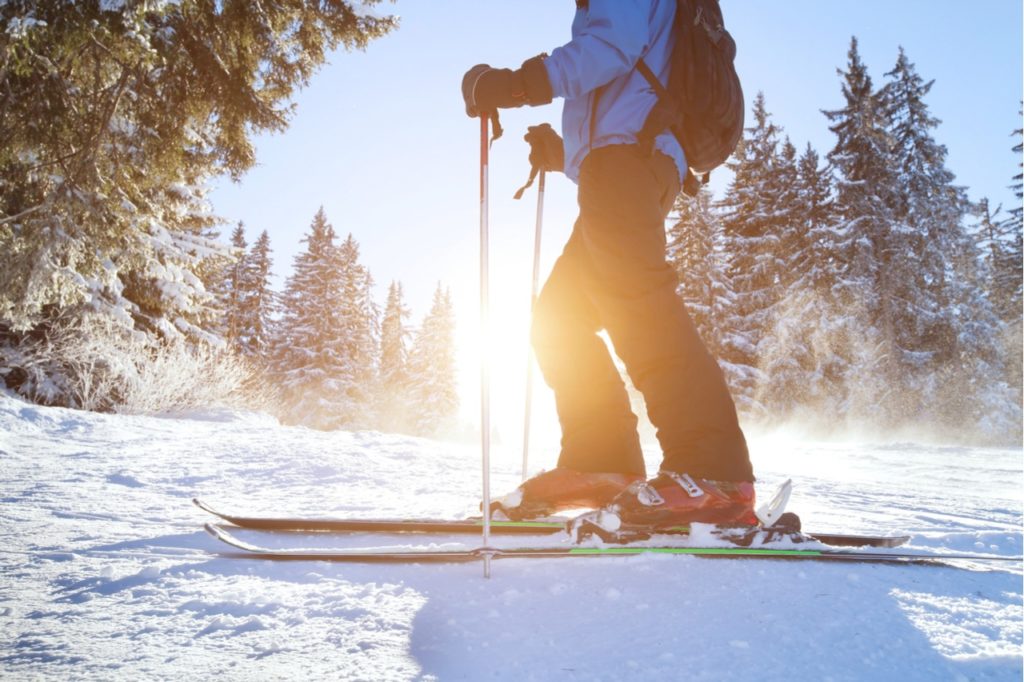While many people huddle inside during the winter months, away from “bomb cyclones” and blizzards, a select few know that the best way to beat wintry weather is to embrace it — on the ski slopes, that is!
As any seasoned skier will tell you, however, their beloved sport does come with the risk of injury. Fortunately, taking some simple precautions before you hit the slopes can help you stay in peak condition regardless of how many tumbles you take.
We’ve outlined some of the most common injuries that afflict skiers, and what you can do to prevent them.
MCL Injuries
A number of injuries can affect the medial collateral ligament (MCL), but the most common by far is an MCL tear. In skiing, MCL tears most often occur when the skier falls while attempting to slow or stop in a snowplow position, in which the tips of the skis are pointed toward each other. To avoid injury in this position, make sure to always keep your weight balanced. In addition, sticking to runs with which you’re comfortable can reduce the need to enter the snowplow position at all.
ACL Injuries
A variety of falls on the slopes can result in a tear of the anterior cruciate ligament (ACL). It most commonly happens after a forward fall, during which the inner edge of the front of the ski becomes embedded in the snow, trapping the leg in the process. It can also occur when the top of the back of the boot pushes the tibia (the weight-bearing bone in the leg) forward, away from the femur. On other occasions, it arises when the skier leans back on the skis, loses balance, and falls backward. Strengthening the hamstrings, wearing proper bindings, and using shorter skis can all reduce the risk of sustaining an ACL tear.
Fractures
Like torn ligaments, fractures are most commonly caused by falls while skiing. The wrist and ankles are particularly susceptible to breaks. To help avoid broken bones, always wear adequate protective gear and practice proper techniques for falling. Increasing cardiovascular endurance and developing the surrounding muscles can also be beneficial.
Shoulder Dislocations
Most shoulder dislocations happen when skiers fall, either directly onto the shoulder or onto an outstretched hand or arm. This injury results in heavy, immediate pain, significantly restricts the shoulder’s range of motion, and can leave it misshapen. Since dislocations are caused by sudden trauma, they can be difficult to anticipate, but strengthening the rotator cuff muscles, especially if you have previously dislocated your shoulder, can lower the risk of a dislocation. As with other common skiing injuries, employing proper form will also minimize the possibility of a dislocation.
Spinal Injuries
Aside from protecting the spinal cord, the spine ensures the strength and stability of the back. It is made up of various bony segments called vertebrae separated by pieces of fibrocartilaginous tissue called intervertebral discs, any of which can be injured while skiing. Some ways to avoid spinal injuries include using spine protectors, sticking to trails on which you are comfortable, using proper equipment, and learning the technique for “safe” falls.
While some ski injuries are immediately apparent, others can be more subtle, slowly progressing with time. Fortunately, the talented team of specialists at New York Bone and Joint has extensive experience working in sports medicine and can quickly diagnose and treat any of these common problems. If you think you may have suffered an injury during your latest trip to the mountain, call us today to schedule a consultation!




